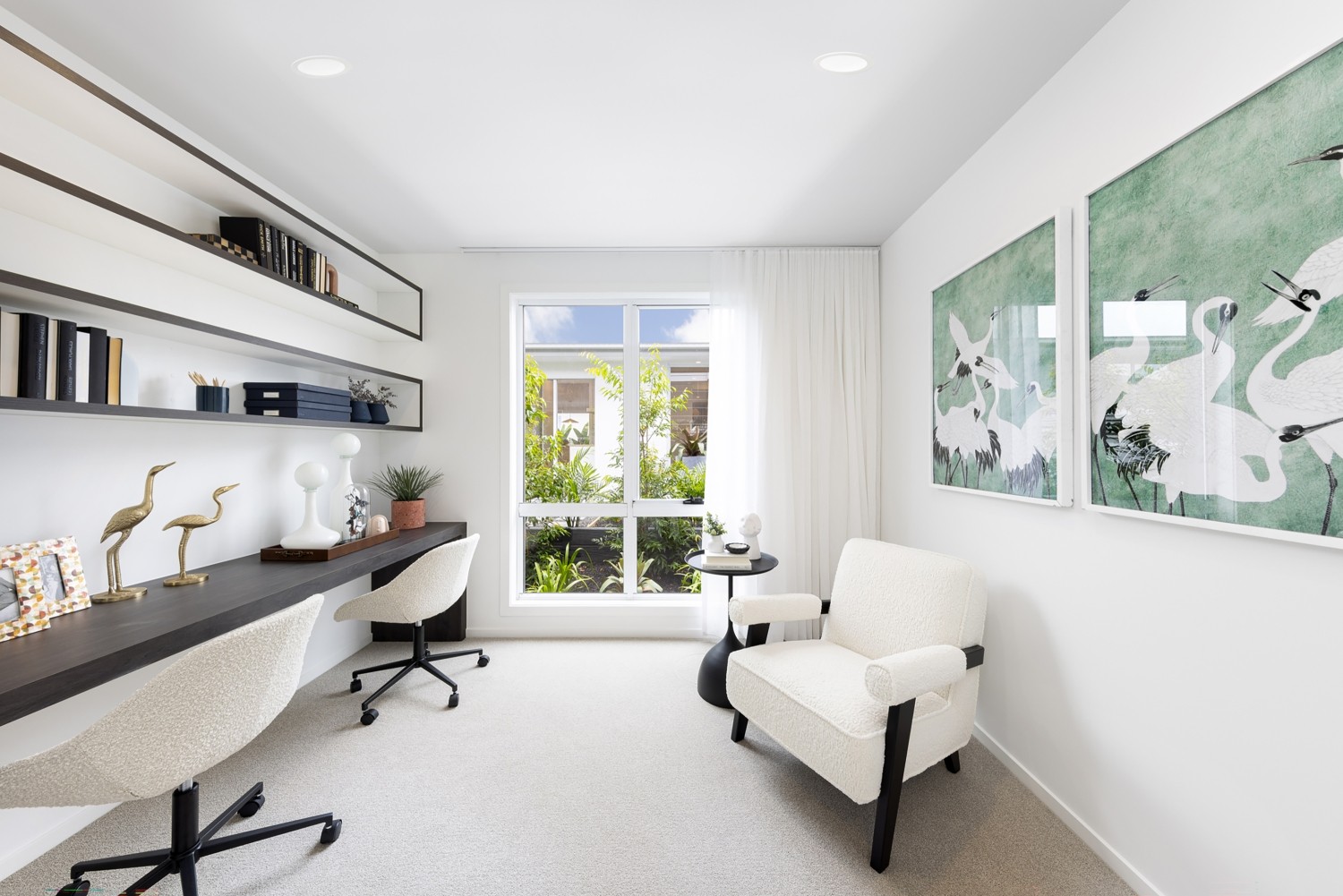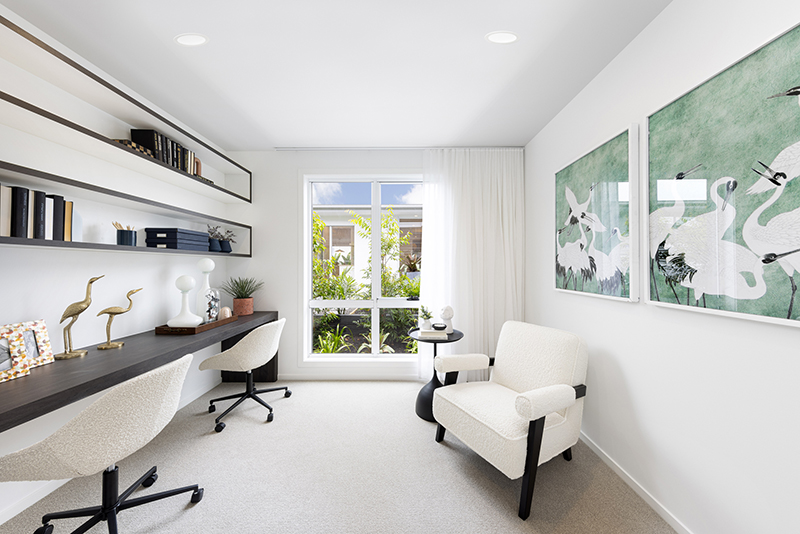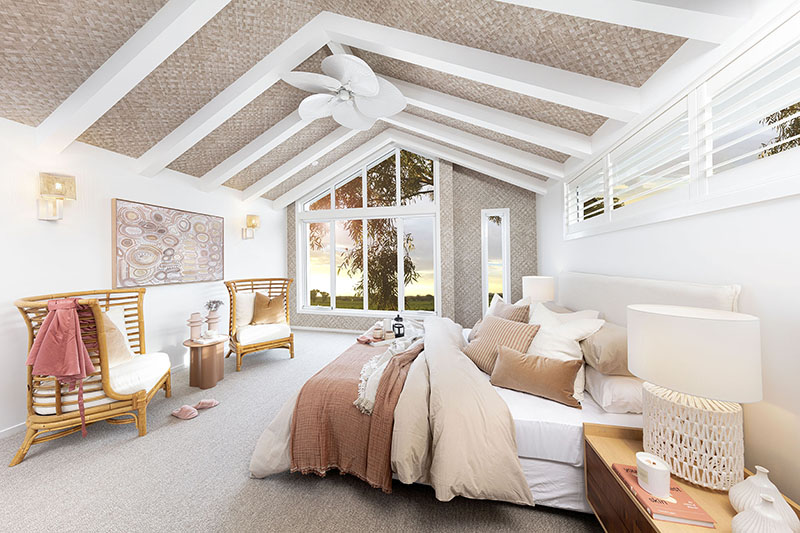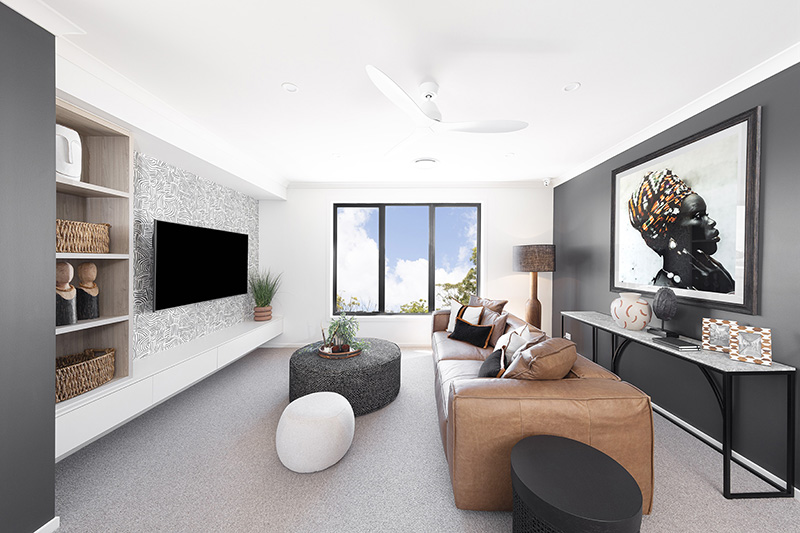What are Awning Windows?

Is it time to choose windows for your new home? It can both an exciting and overwhelming activity, with so many different styles to consider. One popular choice that complements both modern and traditional architecture as well as all sorts of interior design trends is the awning window.
If you’re about to start building your first home and want to know more about awning windows, here’s everything you need to know about how they operate, where they can be installed in your home, their energy efficiency, as well as the pros and cons compared to other options like sliding windows. We’ve also included some helpful maintenance tips to keep your awning windows in top condition all year round.
What is a Window Awning?
Awning windows are hinged at the top and open outwards from the base. This gives your windows a unique look while allow for a more functional design compared to more traditional windows. Awning windows are typically rectangular in shape and are operated by using either a crank mechanism or handle – think of them as a wind out window.
When they are open, the window pane creates an awning-like projection which gives the room excellent ventilation, plenty of natural light and protects you from the outside elements (e.g. rain). Awning windows are versatile and can be installed individually or combined with other window types to create eye-catching awning window configurations that match your personal style preferences.

How Do Awning Windows Operate?
If you are looking for windows that are incredibly easy to use, awning windows should be top of your shopping list. But what are awning windows and how do they actually work? Either a crank mechanism or handle is used to open and close the window – when you turn the handle or use the crank, the window will pivot on its hinges at the top and open outwards from below.
This simple yet functional design gives you precise control over the amount of light and ventilation (i.e. airflow) entering the space. Additionally, the angle of the open window can help direct breezes upwards, promoting better air circulation within the space. Closing the awning window is as simple as turning the handle in the opposite direction or cranking the mechanism until the window is securely shut – being a wind out window, the opening and closing process is very easy.
Where Can Awning Windows Be Used?
Due to their specific design, awning windows are particularly well-suited for locations where airflow, light and ventilation are important. Here are some common areas where awning windows can be installed:
- Kitchens: Awning windows placed above countertops or sinks ensure easy access to fresh air when cooking or washing the dishes. They also let natural light in to brighten up the space.
- Bathrooms: These windows are actually a smart choice if you are looking for more privacy, while still creating a well-ventilated space. Placing awning windows higher on the wall and even near the ceiling could be ideal.
- Garages: Awning windows are a popular choice for garages as they get plenty of natural light and improve airflow in areas that are usually lacking in it.
- Bedrooms: You might like to install awning windows higher on bedroom walls to maintain privacy while allowing fresh air to circulate throughout the room. Leaving windows open at night, for example, can create better ventilation and allow for a more comfortable sleeping environment.

Awning Windows vs. Casement Windows
- Operation: Awning windows are hinged at the top and open from the bottom, while casement windows are hinged on the side and open outward like a door.
- Airflow: Awning windows create an open space that provides ventilation even when it’s raining, as the angle of the window pane creates a protective barrier. Casement windows, on the other hand, usually need to be closed when weather is poor – not unlike sliding windows – especially when it’s raining or in high wind locations.
- Placement: Awning windows are commonly used in higher locations, while casement windows are often installed at eye level or lower.
Both have their benefits, so consider your specific needs and the overall design of your home when deciding between awning and casement windows.
4 Awning Windows Benefits
When it comes to selecting the right windows for your new home, awning windows have several advantages that make them a popular choice compared to more traditional windows. Not only are they functional and aesthetically pleasing, but they can also enhance the overall comfort and energy efficiency of your living spaces. Here are four key awning window benefits, including why they are an excellent option for first-time home builders.
1. Excellent ventilation
Awning windows are designed to optimise airflow, light and ventilation in your home. Their top-hinged design means fresh air can easily enter your space while efficiently venting out stale air. This constant flow makes the home more comfortable and less stuffy. Even during light rain showers, awning windows can remain open thanks to the window panes acting as a protective shield against moisture.
2. Energy efficiency
With rising gas and electricity costs and growing environmental concerns, energy efficiency is a crucial consideration for most Australian homeowners. Awning windows contribute to a more sustainable home build thanks to their enhanced insulation properties and ability to minimise energy consumption.
When it’s closed, the sash of an awning window forms a tight seal against the frame, keeping air leakage to a minimum and preventing drafts. This airtight seal helps to maintain a consistent indoor temperature and eliminates the need for excessive heating or cooling – which can ultimately lead to cheaper energy bills. For an even more energy efficient home you can choose to have the windows double-glazed, with the added benefit of external noise reduction.
To create a home that is more energy-efficient, take a look at our guides on 10 Ways to Make Your Home Greener and 13 Ways to Save on Electricity.

3. Enhanced security
Home security should be top of mind for all homeowners, no matter where you live around the country. Just like security screens for your doors and other window types, awning windows provide an added layer of protection to your home.
The top-hinged design of awning windows makes them more challenging for potential intruders to break into and manoeuvre around – especially when they are installed in a high open space in the room. When locked, the sash is tightly secured against the frame which makes it significantly hard to breach.
4. Versatility and style
Awning windows are not only practical but also aesthetically pleasing. They come in a variety of sizes and styles, making them suitable for different architectural choices – whether you are going for a coastal or Hamptons design, or something more traditional. The sleek and clean lines of awning windows can also add a stylish touch of elegance to your home's exterior and interior. When combined with other types of windows, they can even create eye-catching configurations on your façade.
Maintenance Tips
To keep your awning windows in tip-top condition, you’ll need to maintain them every so often! Here are some easy ways to keep them clean and functional:
- Regular cleaning: Clean your awning windows at least every few months with a mild detergent and water. Be sure to clean the frames, tracks and hardware to remove dirt and grit that builds up over time.
- Keep moving parts well lubricated: Inspect the hinges, crank mechanisms and handles for any signs of wear or damage. These are essential so that your wind out window functions correctly. Lubricate these parts as needed to ensure the opening and closing function stays smooth.
- Clear the drainage system: Some awning windows include a drainage system that directs water away from the window. Check the drainage holes and channels to ensure they are clear of dirt and functioning as expected.
- Seal and weatherstripping: Inspect the seals and weatherstripping around the window frame. Replace any damaged or worn seals – especially the perimeter pressure seal – to maintain a tight seal and prevent air or water from leaking in.
Bring your dream home to life with Brighton Homes
Awning windows are a versatile and functional option for first-time home builders. They offer excellent ventilation, energy efficiency, enhanced security and can be used in almost every area of your house. Now that you are armed with these useful insights, you can make a more informed decision when choosing windows for your new home.
If you’re ready to start your journey to home ownership, Brighton Homes has a wide range of incredible home designs and a team of experts with decades of experience to guide you towards your dream home. Reach out today to find a functional, stylish home design that makes the most of awning windows.
